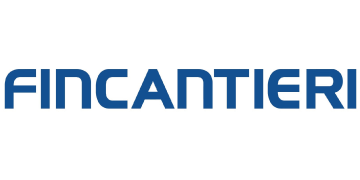
SPOKE 6
MULTISCALE MODELLING & ENGINEERING APPLICATIONS
Context
The Spoke ‘Multiscale Modelling & Engineering Applications’ deals, on the one hand, with computational aspects related to ‘Multiscale modeling’ and, on the other hand, with the use of HPC and Big Data tools for application in the various fields of Science and Engineering. The objectives range from multiscale modeling of complex cybernetic/physical systems that evolve on multiple scales of time and space, to the development of models, algorithms, and codes capable of exploiting the abilities of high-performance computing machines.
The Spoke includes expertise in the development of Digital Twins and model-based design methodologies, and use of simulation techniques that make extensive use of advanced numerical models implemented at major research centers, and via the intensive use of HPC and Big Data facilities.
The characteristic of this Spoke is the ability to globally address problems that span several disciplined, involving multiple scale (from the sub-nanoscopic scale of electrons and atoms, to mesoscale and macroscale), heterogeneous and large datasets, and interdisciplinary and multi-physics approaches, combined with the unique ability to translate numerical and analytical technologies into applications of direct interest and use for different scientific and engineering fields at the national and international level.
Bridging the gap between scales and developing algorithms and codes capable of exploiting the computational power of modern computing architectures is a key to the development of enabling technologies for a huge variety of engineering applications with a view to promoting the development of a knowledge-based society.
Objectives
Spoke 6 explores the unique opportunities offered by the power of exascale computing as well as of the latest industrial grade computing clusters to tackle multiscale problems in science and technology of unprecedented difficulty and size. The use of HPC tools as well as of Machine Learning (ML) and Artificial Intelligence (AI) for applications in the various fields of science and engineering will allow, among other things, to develop Digital Twins and model-based design methodologies. The combined power of new methods and new computing architectures will facilitate innovation, increase the efficiency and safety in many critical engineering areas, ultimately contributing to the digital transition towards a cleaner and more sustainable future.
The aim of Spoke 6 Multiscale Modelling & Engineering Applications is sustaining with scientific and research activities at different TRL (Technology Readiness Levels) the innovation in the following engineering fields, which have high social, industrial and economic impact for Italy since are related to sustainability and climate changes, life science, digital technologies for industry 4.0, artificial intelligence (AI), new materials and complex system.
Activities
In the startup of the Spoke 6 activities a key objective was to identify a set of scientific Flagship Projects:
- Advanced materials and new devices
- Big data analytics & AI
- Computational fluid-dynamics
- Green energy
- Life science
- HPC for complex systems
- Electromagnetic systems
These activities are carried out in close collaboration among Universities (Sapienza, UniPI, UniFI, UniPV, UniRomaTV, UniBO, UniCAL, UniMORE, PoliTO, POliMI), research centers (CNR) and industries.
To maximize the impact of the 7 Flagship scientific and research activities, ICSC has been set-up Innovation Funds for proof-of-concept demonstrators have been set-up, in response to industrial challenge from the core companies of the Italian industrial ecosystem: ThalesAlenia Space, Leonardo, Terna, Ficantieri, Autostrade per l’Italia, Ferrovie dello Stato, ENI, Engineering. Small and Medium enterprises and associations are also involved thanks to the IFAB foundation.
Innovation Funds have been activated in the area of: AI-based Predictive Health Management (PHM) for mission-critical infrastructures (Space satellites, Aerial vehicles, Green energy turbomachinery generation, smart roads and railway transportation system,..); Digital Twin of green propulsion engines, of wind turbine farms for renewable energy generation, and of underwater marine vehicles; HPC and AI for earth observation space distributed constellations systems and for simulation and optimization of energy and critical infrastructures, as well as complex networks.
Istitution leader

Istitution co-leader

Institutions and Universities








Companies










